Sold Ceramics
Sold Japanese Blue and White wares 17th Century
Tableware and other Porcelain with Western Shapes
Page 2
Japon de commande
In Japan porcelain was also manufactured to order, both for private parties as well as, in a few cases, for the Dutch East India Company, (Vereenigde Oost-Indische Compagnie, VOC). The private buyers were in fact solely Dutch East India Company employees of Deshima, The Dutch trading post in Nagasaki in Souhern Japan. As only European company, The Dutch East India Company was given the monopoly to trade in Japan. Japon de commande was therefore much more exclusive than Chine de commande.
Striking are the blue dishes featuring the Dutch East India Company monogram on them. There is hardly any record of these specific pieces to be found in the Dutch East India Company achieves, but they were apparently often manufactured to order as the Company's 'official' tableware, which was used aboard the ships, in the trading posts all over Asia and even at the dinner table of the Governor-General of the Dutch East Indies in Batavia. Oddly enough it was never actually made in China itself, nor painted in enamel colours. Other motifs are family coats of arms, depictions of Dutch landscapes as well as of Dutch people and their ships. Also, quite striking are the bulbous flasks initialled with either their alcoholic or medicinal contents or with their owner's name. (Source: Groninger Museum)

Sold Ceramics - Sold Japanese Blue and White wares 17th Century - Tableware and other Porcelain with Western Shapes - Page 2
Object 2012624
Shaving basin
Japan
1670-1690
Height 68 mm (2.68 inch), diameter of rim 276 mm (10.87 inch), diameter of footring 114 mm (4.49 inch), weight 1.096 grams (38.66 ounce (oz.))
Shaving bowl or barber's on footring. Spreading flat rim with a semicircular section saved in the lower part, two pierced holes on top. One the base one spur-mark. Decorated in underglaze blue with a vase filled with peonies on a terrace. The rim with peony scrolls. The reverse witg two sketchy landscapes with a [avilion and trees. Three circles round the foot, one on the base.
The first documentary evidence for scheerbeckens or shaving bowls is a 1662 invoice from the Director of the Deshima factory in Nagasaki regarding an order for 258 of these dishes for shipment to the Netherlands. After this point shaving dishes become a regular export item.
Shaving bowls were used by barbers and were indispensable in the Dutch household too. They were made of earthenware, pewter, copper and even silver. Beside their function as a shaving utensil, they had an alternative use, namely to let blood from a vein in the arm during blood-letting. This was a medical procedure thought to drain bad blood from the system, which was also performed by the barber/surgeon. In the seventeenth century, regulations were put in place in England to govern what barbers were permitted to do. Thus, they became confined to bloodletting and treating external diseases. In Prussia the barbers' and the surgeons' guild joined in 1779, and it was said of great Prussian surgeons that they had risen "up from the barber's bowl”. Both purposes explain the semi-circular saving. The two holes in the rim are for a cord or string. A shaving basin with the actual silk string still attached was excavated in Amsterdam. The string was used to suspend it from the client's neck to catch lather and water during shaving, or to hang the bowl on the wall thus implying that owners also appreciated the bowl for its decorative value as well as its function. Shaving bowls can be seen hanging on the wall as such in some dollhouses.
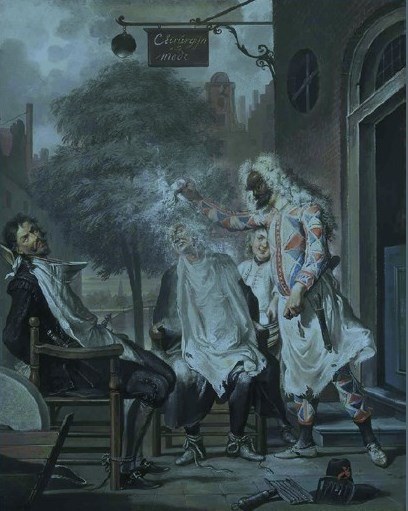
Cornelis Troost, Arlequin toovenaar en barbier, 1738, Mauritshuis, The Hague, Netherlands, inv. nr. 184. In spite of the satirical intent, the painting reflects actual usage.
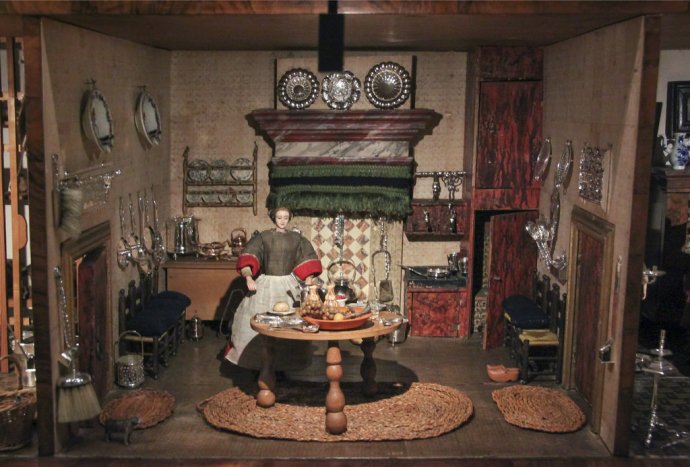
The doll’s house of Petronella Dunois (1650-1695), c. 1676, Rijksmuseum, Amsterdam, the Netherlands, inv.nr. BK-14656. Two shaving dishes are suspended on the left wall.
Chinese shaving bowls usually have the holes in the footring instead of the rim. Most Japanese barber’s bowls are more or less rounded, whereas Chinese barber’s bowls usually are oval (for a Chinese example, please see Sold Archives object 2011301)
Larger pieces of Japanese porcelain such as plates, bowls and dishes, had a tendency to ‘sag’ during firing. That’s why they were often supported in the kiln by small stoneware pillars. After firing, these small cones or spurs which adhered to the base were knocked off, leaving behind small unglazed rough patches or spur marks on the base. The supports were arranged in X, Y or other patterns. Whether they have any relevance to dating or an attribution to a specific kiln is still unresolved. These spur marks are typically Japanese and are rarely seen on Chinese porcelain.
This shaving bowl shows one large spur, instead of several small spur marks, which is unusual.
For an almost identically decorated Japanese shaving bowl, please see:
- Hizen wares abroad, The 10th anniversary special exhibition, (Kyushu Ceramic Museum, Kyushu, 1990), p.39, Fig.38.
- Fine & Curious. Japanese Export Porcelain in Dutch Collections, (C.J.A. Jörg, Hotei Publishing, Amsterdam, 2003), p.184, cat. 227.
Condition: Some firing flaws due to the firing process.
References:
Price: Sold.

Sold Ceramics - Sold Japanese Blue and White wares 17th Century - Tableware and other Porcelain with Western Shapes - Page 2
Object 2012621
Salt
Japan
1670-1690
Height 95 mm (3.74 inch), diameter concave scale 47 mm (1.85 inch), diameter foot 95 mm (3.74 inch), weight 247 grams (8.71 ounce (oz.))
Eight-sided salt of waisted shape on spreading foot, the open foot unglazed. Short tapering neck, the top slightly concave. Decorated in underglaze blue with a bird perched on a rock surrounded by flowering plants, at the foot rockwork with grasses and flowering plants.
As mustard pots, salts were also among the first items the Dutch East India Company, (Vereenigde Oost-Indische Compagnie, VOC) ordered, but unfortunately no particulars are given regarding shape or decoration. They belonged to the standard assortment, the shape derived from a Dutch pewter or ceramic model. (Jörg 2003/1, p.163)
The material and the Japanese style decoration made this salt an exotic object that was prominently placed on a richly laid table. At this time salts were ordered separately, and only much later as part of a dinner service. With many Christian connotations, salt was an important seasoning at dinner before the 19th century and salts larger and more elaborate than they are today. (Jörg 2011/2, p.148)
For similarly shaped and decorated salts, please see;
- The Voyage of Old-Imari Porcelains: Exhibition Catalogue of the Kyushu Ceramic Museum, Arita 2000, p.68, cat.115 & 117
- Complete Catalogue of the Shibata Collection, (The Kyushu Ceramic Museum, Kyushu 2003), p.284, cat. 2209
Condition: A chip at the foot.
References:
Price: Sold.

Sold Ceramics - Sold Japanese Blue and White wares 17th Century - Tableware and other Porcelain with Western Shapes - Page 2
Object 2012515
Cuspidor / Spittoon
Japan
1670-1690
Height 191 mm (7.52 inch), diameter of rim 194 mm (7.64 inch), diameter of footring 75 mm (2.95 inch), weight 1,130 grams (39.89 ounce (oz.))
Cuspidor or spittoon on footring. Compressed globular body, the upper part with straight, spreading sides and an everted rim. Decorated in underglaze blue with fruiting pomegranates and other flowering plants and grasses alternating with flowering peony and grasses. On the inside a widespread fruiting pomegranate spray alternating with a widespread flowering peony spay.
Cuspidors were indispensable in the interior especially in the East Indies where both tobacco and betel nuts were chewed. Volker mentions Japanese porcelain and copper cuspidors in the lodges of the merchants on Deshima for 1701 and 1702. Excavations at the Deshima site yielded sherds of several examples, also proving their use there. Dutch metal or earthenware cuspidors will have served as models, although the same shape has been known in Chinese ceramics since the Tang period, serving as a vase for a lotus flower. Interestingly, the VOC documents make no mention of Company shipments or orders for cuspidors, and they must therefore have been shipped privately. Cuspidors / spittoons were made in a number of Arita kilns, such as Chokichidani, Tani and Shimoshirakawa. (Volker 1959, pp.28-29), (Jörg 2003/1, p,166)
(picture courtesy: Otto Kalkhoven, Eppenhuizen; Han Gerretsen, Roden; Ida Stamhuis (Menkemaborg) website Menkema Borg, Herenkamer Uithuizen, The Netherlands, for this cuspidor/spittoon please see: Fine & Curious. Japanese Export Porcelain in Dutch Collections, (C.J.A. Jörg, Hotei Publishing, Amsterdam, 2003), p.166, cat. 192.)
For similar cuspidors or spittoons, please see;
- Japans porselein met blauwe decoraties uit de tweede helft van de zeventiende en de eerste helft van de achttiende eeuw, (D.F. Lunsingh Scheurleer, in, Mededelingenblad Nederlandse Vereniging van Vrienden van de Ceramiek, 64/65, 1971), p.112. cat. 185.
- H.A. Daendels, Catalogus tentoonstelling Japans blauw wit Porselein. Op Hollandse bestelling en in de Japanse smaak, exhibition catalogue Gemeentelijk Museum Het Princessehof, Leeuwarden 1981. Also Published as Mededelingenblad Nederlandse Vereniging van Vrienden van de Ceramiek, vols. 101/102, p.76, cat.122 & 123.
- Ko-Imari from the collection of Oliver Impey, (Barry Davies Oriental Art, London, 1997), pp.70-71, cat. 32.
- Fine & Curious. Japanese Export Porcelain in Dutch Collections, (C.J.A. Jörg, Hotei Publishing, Amsterdam, 2003), p.166, cat. 192.
Spittoons were made in a number of Arita kilns, such as Chokichidani, Tani and Shimoshirakawa. (Jörg 2003/1, p,166)
For an example of a sherd of a cuspidor / spittoon excavated at the Tani kiln site in Arita, please see:
Condition: Some popped bubbles of glaze, caused during the firing process and some firing flaws all to the rim.
References:
Lunsingh Scheurleer 1971, cat. 185
Price: Sold.

Sold Ceramics - Sold Japanese Blue and White wares 17th Century - Tableware and other Porcelain with Western Shapes - Page 2
Object 2012490 & 2012492
Bowl, cover and underdish
Japan
c.1690
Dish: height 42 mm (1.65 inch), diameter of rim 220 mm (8.66 inch), diameter of footring 114 mm (4.41 inch), weight 567 grams (20.00 ounce (oz.))
Bowl (without cover): height 69 mm (2.72 inch), diameter of rim 149 mm (5.87 inch), diameter of footring 70 mm (2.76 inch), weight 303 grams (10.69 ounce (oz.))
Cover: height 38 mm (1.50 inch), diameter of rim 124 mm (4.88 inch), diameter of ring 50 mm (1.97 inch), weight 121 grams (4.27 ounce (oz.))
Octagonal bowl on footring, steep sides, slightly everted straight rim. Octagonal dish on footring, flat rim with slightly upturned edge. A single spur-mark on the base, the cover with ring and straight rim. Decorated in underglaze blue with a bird perched upon a rock flanked by flowering plants. On the sides groups of flowering chrysanthemums, peonies and cherry blossom growing from rockwork. On the reverse three sprays of prunus blossom. The inside of the ring of the cover and the rims of the bowl and dish with traces of gilding.
Davies states that it is most unusual to find a complete set of bowl, cover and underdish. (London 1997, p.70)
For an identically shaped, sized and decorated bowl, cover and underdish, formerly in the collection of Oliver Impey, please see:
Hartog states that the that the decoration of the goldpaint may have been applied in the Netherlands. The cover has a standring. When the cover was put upside down, food from the bowl could be put on it served as an eating-dish. (Hartog 1990, p.152)
For identically shaped, sized and decorated bowls with covers, please see:
- The Japanese porcelain trade of the Dutch East India Company after 1683, (T. Volker, Rijksmuseum voor Volkenkunde, E.J. Brill, Leiden 1959), Pl. VII, No. 9.
- Japans porselein met blauwe decoraties uit de tweede helft van de zeventiende en de eerste helft van de achttiende eeuw, (D.F. Lunsingh Scheurleer, in, Mededelingenblad Nederlandse Vereniging van Vrienden van de Ceramiek, 64/65, 1971), p.114, cat. 193.
- Pronken met Oosters porselein, exhibition catalogue Gemeente Museum Arnhem, (S. Hartog, Waanders, Zwolle 1990), p.128, cat. 154.
Conditions:
Bowl: Perfect.
Cover: Perfect.
Dish: Perfect.
References:
Lunsingh Scheurleer 1971, cat. 193
Price: Sold.

Sold Ceramics - Sold Japanese Blue and White wares 17th Century - Tableware and other Porcelain with Western Shapes - Page 2
Object 2011466
Ewer
Japan
1660-1680
Height 206 mm (8.11 inch), diameter 97 mm (3.82 inch), diameter of mouthrim 39 mm (1.54 inch), diameter of footring 61 mm (2.40 inch), weight 513 grams (18.10 ounce (oz.))
Ewer of ovoid body on a spreading takefushi or 'bamboo-noded' foot. Narrow waisted neck and large cup-shaped mouth with pinched spout. Curved pierced handle. Decorated in underglaze blue in Chinese Transitional style with a sketchy mountainous landscape with swirling clouds, banana trees and other vegetation. Round the foot, shoulder, neck and on the handle bands with a classic scroll, zig-zag and foliate patterns.
The Chinese Transitional style was virtually unknown in Japan until it was introduced by the Dutch. Japanese potters were not asked to imitate original Chinese porcelains by the Dutch; instead they were given wooden models which had probably been painted by Delft pottery decorators (though this is undocumented) or earthenware (presumably Delft). It is hardly surprising therefore, that the resultant Japanese essays in Transitional style are far from the original both in design and execution. Many shapes are Chinese, and some are Near Eastern, but others reflect Delft wares or at least Delft variations on a Chinese theme. Most Japanese Transitional style wares are in closed shapes, mugs, jugs, jars and ewers; most kraak style pieces are in open shapes, plates and bowls. The piercing on the handles of this and similar shapes is original, and was intended for the silver or other metal mount that would customarily have been added in Europe. (Impey 2002, pp.42-49 & p.49)
The shape of this ewer derived from a German stoneware model. For similarly shaped ewers decorated with Dutch armorials, please see:
- Japans porselein met blauwe decoraties uit de tweede helft van de zeventiende en de eerste helft van de achttiende eeuw, (D.F. Lunsingh Scheurleer, in, Mededelingenblad Nederlandse Vereniging van Vrienden van de Ceramiek, 64/65, 1971), p.81, cat. 89.
- Chinesisches und japanisches Porzellan in europäischen Fassungen, ( D.F. Lunsingh Scheurleer, Verlag Klinkhardt & Biermann, Braunschweig,1980), p.383, cat. 400a.
- Fine & Curious: Japanese Export Porcelain in Dutch Collections, (C.J.A. Jörg, Hotei publishing, Amsterdam, 2003), p.230, cat. 292
The shape of the bulging foot, which spreads and then turns sharply inward, is seen on many ewers of this period as well as on later jars, vases and other pieces. It is a distinctively Japanese feature, called takefushi, 'bamboo-noded' foot. (Jörg 2003/1, p.74)
The flower motif on the cup-shaped mouth replaces similarly located 'tulip' designs on Chinese Transitional export porcelain. (Jörg 2003/1, p.160)
For similarly shaped ewers, please see:
- Japans porselein met blauwe decoraties uit de tweede helft van de zeventiende en de eerste helft van de achttiende eeuw, (D.F. Lunsingh Scheurleer, in, Mededelingenblad Nederlandse Vereniging van Vrienden van de Ceramiek, 64/65, 1971), p.80, cat. 88.
- Chinesisches und japanisches Porzellan in europäischen Fassungen, ( D.F. Lunsingh Scheurleer, Verlag Klinkhardt & Biermann, Braunschweig,1980), p.382, cat. 399.
- Ko-Imari from the collection of Oliver Impey, (Barry Davies Oriental Art, London, 1997), pp.40-41, cat. 16.
- Fine & Curious: Japanese Export Porcelain in Dutch Collections, (C.J.A. Jörg, Hotei publishing, Amsterdam, 2003), p.159, cat.177
Condition: A frit to the handle.
References:
Lunsingh Scheurleer 1971, cat. 88 & cat. 89
Lunsingh Scheurleer 1980, cat. 399 & cat. 400a
Jörg 2003/1, p.74 & cat. 177 & cat. 292
Price: Sold.

Sold Ceramics - Sold Japanese Blue and White wares 17th Century - Tableware and other Porcelain with Western Shapes - Page 2
Object 2011142
Ewer
Japan
1660-1680
Height 199 mm (7.83 inch), diameter 110 mm (4.33 inch), diameter of mouthrim 28 mm (1.10 inch), diameter of footring 68 mm (2.68 inch), weight 638 grams (22.51 ounce (oz.))
Ewer of ovoid body on spreading takefushi or 'bamboo-noded' foot, cylindrical neck and pierced loop-handle. Decorated in underglaze blue. On the neck two flowers who bear the well-known tulip-design, a stylised, symmetrical flower. The central section is decorated in a, sketchily drawn, Chinese Transitional style of two figures in a landscape with rocks, clouds, pine and banana trees and other vegetation. Round the foot, on the shoulder and the handle bands with a formal foliate pattern.
Jörg notes that these foliate bands betray a Dutch Delftware influence.
The Chinese Transitional style was virtually unknown in Japan until it was introduced by the Dutch. Japanese potters were not asked to imitate original Chinese porcelains by the Dutch; instead they were given wooden models which had probably been painted by Delft pottery decorators (though this is undocumented) or earthenware (presumably Delft). It is hardly surprising therefore, that the resultant Japanese essays in Transitional style are far from the original both in design and execution. Many shapes are Chinese, and some are Near Eastern, but others reflect Delft wares or at least Delft variations on a Chinese theme. Most Japanese Transitional style wares are in closed shapes, mugs, jugs, jars and ewers; most Kraak style pieces are in open shapes, plates and bowls. The piercing on the handles of this and similar shapes is original, and was intended for the silver or other metal mount that would customarily have been added in Europe. (Impey 2002, pp.42-49 & p.49)
The shape of the bulging foot, which spreads and then turns sharply inward, is seen on many ewers of this period as well as on later jars, vases and other pieces. It is a distinctively Japanese feature, called takefushi, 'bamboo-noded' foot. (Jörg 2003/1, p.74)
For similarly shaped and decorated ewers, please see:
- Japans porselein met blauwe decoraties uit de tweede helft van de zeventiende en de eerste helft van de achttiende eeuw, (D.F. Lunsingh Scheurleer, in, Mededelingenblad Nederlandse Vereniging van Vrienden van de Ceramiek, 64/65, 1971), p.79, cat. 83.
- Chinesisches und japanisches Porzellan in europäischen Fassungen, ( D.F. Lunsingh Scheurleer, Verlag Klinkhardt & Biermann, Braunschweig,1980), p.387, cat. 406.
- Japanese porcelain. A collector's guide to general aspects and decorative motifs, (P.L.W. Arts, Lochem 1983), p.95, Plate 50.
- Japanese Export Porcelain. Catalogue of the Collection of the Ashmolean Museum, Oxford, (O. Impey, Hotei Publishing, Amsterdam, 2002), p.49, cat. 24.
- Fine & Curious: Japanese Export Porcelain in Dutch Collections, (C.J.A. Jörg, Hotei publishing, Amsterdam, 2003), p.159, cat.178
Condition: Crazing to the glaze around the lower section of the ewer.
References:
Lunsingh Scheurleer 1971, cat. 83
Lunsingh Scheurleer 1980, cat. 406
Price: Sold.

Sold Ceramics - Sold Japanese Blue and White wares 17th Century - Tableware and other Porcelain with Western Shapes - Page 2
Object 2012160
Ewer
Japan
1655-1670
Height (including silver mount) 223 mm (8.78 inch), diameter 110 mm (4.33 inch), diameter of mouthrim 38 mm (1.50 inch), diameter of footring 61 mm (2.40 inch), weight (including silver mount) 652 grams (23.00 ounce (oz.))
Ewer of ovoid body on a spreading takefushi or 'bamboo-noded' foot. Narrow waisted neck and large cup-shaped mouth with pinched spout. Curved pierced handle. Engraved Dutch silver mounts (unmarked). Decorated in underglaze blue with a duck on a rock in a march landscape and a butterfly in flight, flanked by flowring plants with birds perched on branches. Round the foot and on the shoulder a pointed lotus leaves pattern border. On the foot and neck blue bands and on the shoulder a formal foliate pattern border, On the neck two stylised symmetrical flowers. The handle with a foliate pattern scroll.
The Chinese Transitional style was virtually unknown in Japan until it was introduced by the Dutch. Japanese potters were not asked to imitate original Chinese porcelains by the Dutch; instead they were given wooden models which had probably been painted by Delft pottery decorators (though this is undocumented) or earthenware (presumably Delft). It is hardly surprising therefore, that the resultant Japanese essays in Transitional style are far from the original both in design and execution. Many shapes are Chinese, and some are Near Eastern, but others reflect Delft wares or at least Delft variations on a Chinese theme. Most Japanese Transitional style wares are in closed shapes, mugs, jugs, jars and ewers; most kraak style pieces are in open shapes, plates and bowls. The piercing on the handles of this and similar shapes is original and was intended for the silver or other metal mount that would customarily have been added in Europe. (Impey 2002, pp.42-49 & p.49)
The shape of this ewer derived from a German stoneware model. For similarly shaped ewers decorated with Dutch armorials, please see:
- Japans porselein met blauwe decoraties uit de tweede helft van de zeventiende en de eerste helft van de achttiende eeuw, (D.F. Lunsingh Scheurleer, in, Mededelingenblad Nederlandse Vereniging van Vrienden van de Ceramiek, 64/65, 1971), p.81, cat. 89.
- Chinesisches und japanisches Porzellan in europäischen Fassungen, ( D.F. Lunsingh Scheurleer, Verlag Klinkhardt & Biermann, Braunschweig,1980), p.383, cat. 400a.
- Fine & Curious: Japanese Export Porcelain in Dutch Collections, (C.J.A. Jörg, Hotei publishing, Amsterdam, 2003), p.230, cat. 292
The shape of the bulging foot, which spreads and then turns sharply inward, is seen on many ewers of this period as well as on later jars, vases and other pieces. It is a distinctively Japanese feature, called takefushi, 'bamboo-noded' foot. (Jörg 2003/1, p.74)
The flower motif on the cup-shaped mouth replaces similarly located 'tulip' designs on Chinese Transitional export porcelain. (Jörg 2003/1, p.160)
For an identically shaped, sized and decorated ewer, please see:
- The Shibata Collection Part V, (The Kyushu Ceramic Museum, Kyushu, 1997), p.41, cat. 37.
- Complete Catalogue of the Shibata Collection, (The Kyushu Ceramic Museum, Kyushu 2003), p.332, cat. 1142.
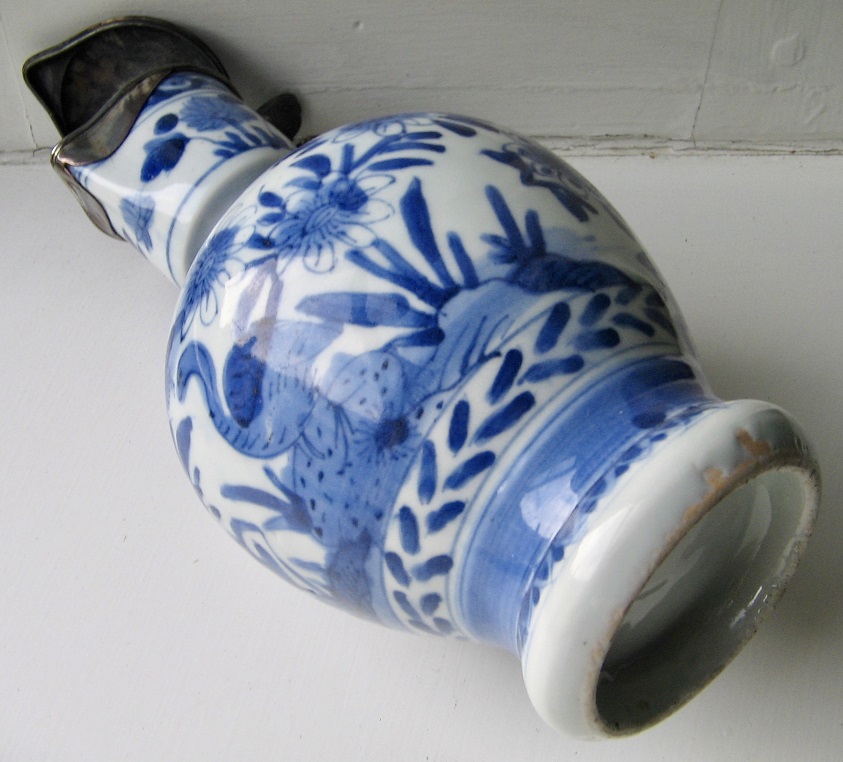
An identically shaped, sized and decorated ewer from an English private collection, (this eweri is not included in this sale /offer).
For similarly shaped ewers, please see:
- Japans porselein met blauwe decoraties uit de tweede helft van de zeventiende en de eerste helft van de achttiende eeuw, (D.F. Lunsingh Scheurleer, in, Mededelingenblad Nederlandse Vereniging van Vrienden van de Ceramiek, 64/65, 1971), p.80, cat. 88.
- Chinesisches und japanisches Porzellan in europäischen Fassungen, ( D.F. Lunsingh Scheurleer, Verlag Klinkhardt & Biermann, Braunschweig,1980), p.382, cat. 399.
- Ko-Imari from the collection of Oliver Impey, (Barry Davies Oriental Art, London, 1997), pp.40-41, cat. 16.
- Fine & Curious: Japanese Export Porcelain in Dutch Collections, (C.J.A. Jörg, Hotei publishing, Amsterdam, 2003), p.159, cat.177
Condition: A firing flaw to the base, firing tension hairlines to the foot and handle, a circular hairline to the body.
References:
Lunsingh Scheurleer 1971, cat. 88 & cat. 89
Lunsingh Scheurleer 1980, cat. 399 & cat. 400a
Jörg 2003/1, p.74 & cat. 177 & cat. 292
Price: Sold.

Sold Ceramics - Sold Japanese Blue and White wares 17th Century - Tableware and other Porcelain with Western Shapes - Page 2
Object 2012100
Chamber-pot
Japan
1700-1720
Height with cover 167 mm (6.57 inch), height without cover 99 mm (3.90 inch), diameter of mouthrim 216 mm (8.50 inch), diameter of footring 75 mm (2.95 inch), weight with cover 1,382 grams (48.75 ounce (oz.)), weight cover 571 grams (20.14 ounce (oz.))
Chamber-pot on footring with spreading upturned rim, two C-shaped curved handles with thumb-rests. Domed recessed cover with flattened knob. Decorated in underglaze blue with peonies sprays and foliage. On the rim a foliate scroll. On the handles a formal foliate pattern. The inside with an unglazed (biscuit) band fitting the original cover, the cover is decorated en suite.
Besides dinner services, covered jars, tea, coffee and chocolate sets also other utilitarian or luxury items were ordered after a Western model. These included cylindrical beer mugs, barbers' bowls, cuspidors and chamber pots therefore these objects can be considered Japon de commande.
The biscuit band fits the cover. Similar examples are known without such a band. Sherds of chamber-pots of this type were not only found in abundance excavations at Deshima. testifying to their local use by the Dutch, but also in former Dutch East India Company, (Vereenigde Oost-Indische Compagnie, VOC) settlements on Java. There is even an example in the Topkapi Saray Museum, Istanbul. Another is in the Dresden Collection. They occur in different sizes, including very large; a variant has two handles. All are painted with similar large sprays, sometime rather coarsely. As a non-fashionable utility-ware they are difficult to date, and their production may have continued for a long time. Sherds have been found at the Shimoshirakawa and Sarugawa kilns, both of which continued production until the mid-18th century. They might have been made in other kilns as well continued until the mid-18th century. (Jörg 2003/1, p.164, cat. 188)
For similarly shaped and decorated chamber-pots, please see:
- Porcelain and the Dutch East India Company, as recorded in the Dagh-registers of Batavia castle, those of Hirado and Deshima and other contemporary papers 1602-1682, (T. Volker, Rijksmuseum voor Volkenkunde, E.J. Brill, Leiden 1954, reprint 1971), Pl. XXI, cat. 37.
- De Japanse Porseleinkast. Japans export porselein uit de 17e en 18e eeuw, exhibition catalogue Museum Willet-Holthuysen, Amsterdam 1972, p.10 & p.22, cat. 102.
- H.A. Daendels, Catalogus tentoonstelling Japans blauw wit Porselein. Op Hollandse bestelling en in de Japanse smaak, exhibition catalogue Gemeentelijk Museum Het Princessehof, Leeuwarden 1981. Also Published as Mededelingenblad Nederlandse Vereniging van Vrienden van de Ceramiek, vols. 101/102, p.64 cat. 88.
- Fine & Curious. Japanese Export Porcelain in Dutch Collections, (C.J.A. Jörg, Hotei Publishing, Amsterdam, 2003), p.164, cat. 188.
For sherds from the Pasar Ikan and The Banten Lama site of similarly shaped and in underglaze blue decorated chamber-pots, please see:
Condition: A hairline to the pot and a restored cover.
References:
Kyushu 1990/1, cat. 261 tm 264 & cat 343 tm 345
Price: Sold.

Sold Ceramics - Sold Japanese Blue and White wares 17th Century - Tableware and other Porcelain with Western Shapes - Page 2
Object 2012030
Cuspidor / Spittoon
Japan
c.1700
Height 90 mm (3.54 inch), diameter of rim 142 mm (5.59 inch), diameter of footring 64 mm (2.52 inch), weight 410 grams (14.46 ounce (oz.))
Cuspidor or spittoon on footring. Compressed globular body, the upper part with straight, spreading sides and an everted underglaze brown-edged rim. Decorated in underglaze blue with flowerheads and leafy scrolls. The outside of the upper part is undecorated on the inside three flowering peony sprays.
Cuspidors were indispensable in the interior especially in the East Indies where both tobacco and betel nuts were chewed. Volker mentions Japanese porcelain and copper cuspidors in the lodges of the merchants on Deshima for 1701 and 1702. Excavations at the Deshima site yielded sherds of several examples, also proving their use there. Dutch metal or earthenware cuspidors will have served as models, although the same shape has been known in Chinese ceramics since the Tang period, serving as a vase for a lotus flower. Interestingly, the VOC documents make no mention of Company shipments or orders for cuspidors, and they must therefore have been shipped privately. Cuspidors / spittoons were made in a number of Arita kilns, such as Chokichidani, Tani and Shimoshirakawa. (Volker 1959, pp.28-29), (Jörg 2003/1, p,166)
The doll’s house of Petronella Oortman (1656-1716), c.1686 - c.1710, Rijksmuseum, Amsterdam, the Netherlands, inv.nr. BK-NM-1010. Two spittoons are standing beside the table and chairs. (Picture courtesy : judithsgarden.eu)
For similar cuspidors or spittoons, please see;
- Japans porselein met blauwe decoraties uit de tweede helft van de zeventiende en de eerste helft van de achttiende eeuw, (D.F. Lunsingh Scheurleer, in, Mededelingenblad Nederlandse Vereniging van Vrienden van de Ceramiek, 64/65, 1971), p.112. cat. 185.
- H.A. Daendels, Catalogus tentoonstelling Japans blauw wit Porselein. Op Hollandse bestelling en in de Japanse smaak, exhibition catalogue Gemeentelijk Museum Het Princessehof, Leeuwarden 1981. Also Published as Mededelingenblad Nederlandse Vereniging van Vrienden van de Ceramiek, vols. 101/102, p.76, cat.122 & 123.
- Ko-Imari from the collection of Oliver Impey, (Barry Davies Oriental Art, London, 1997), pp.70-71, cat. 32.
- Fine & Curious. Japanese Export Porcelain in Dutch Collections, (C.J.A. Jörg, Hotei Publishing, Amsterdam, 2003), p.166, cat. 192.
Spittoons were made in a number of Arita kilns, such as Chokichidani, Tani and Shimoshirakawa. (Jörg 2003/1, p,166)
For an example of a sherd of a cuspidor / spittoon excavated at the Tani kiln site in Arita, please see:
Condition: A tiny firing flaw to the rim.
References:
Lunsingh Scheurleer 1971, cat. 185
Rijksmuseum, Amsterdam, the Netherlands, inv.nr. BK-NM-1010
Judith's garden (website) judithsgarden.eu
Price: Sold.


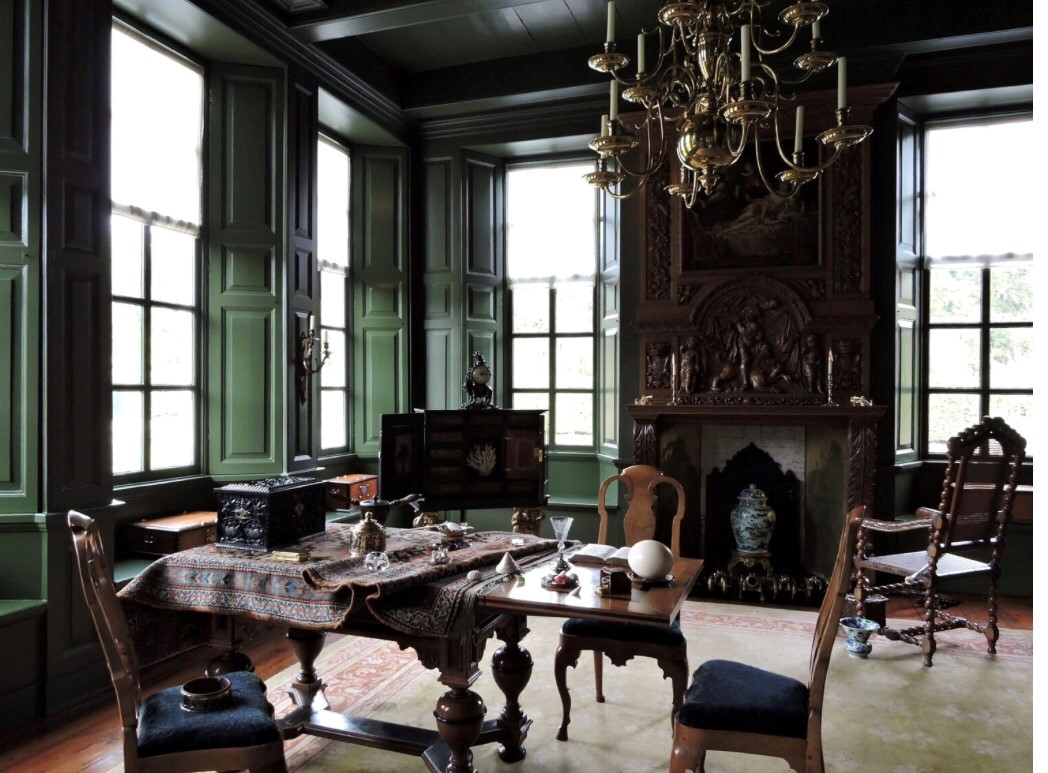
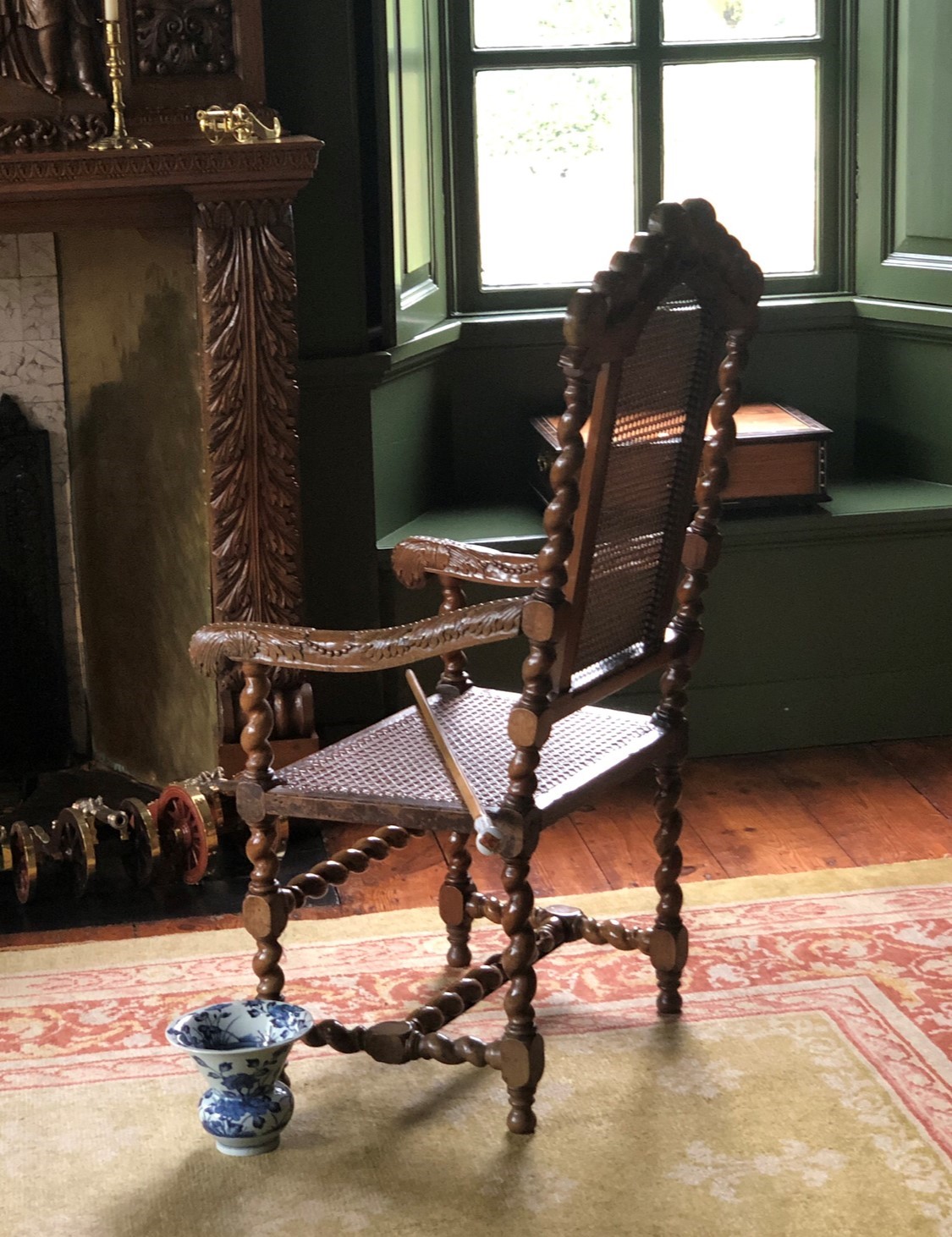
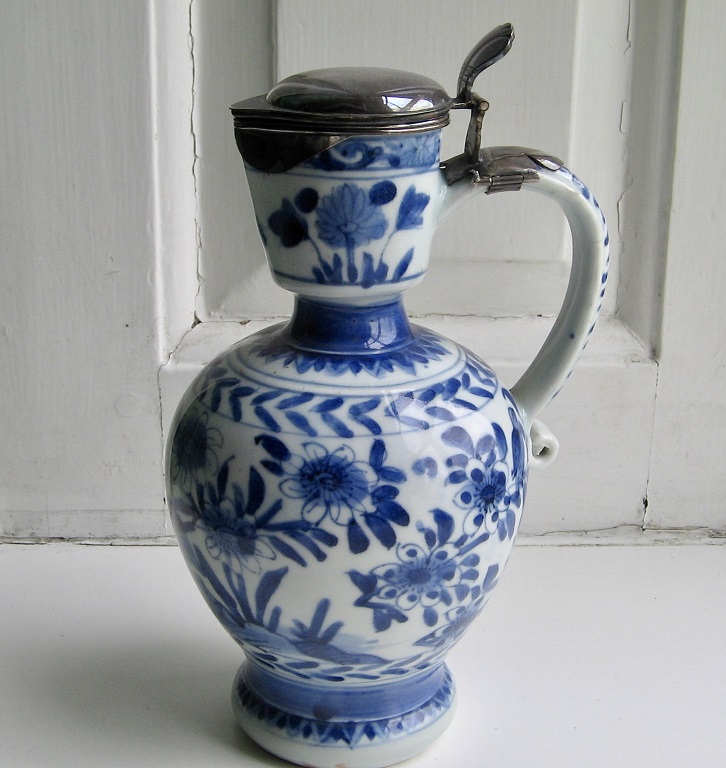
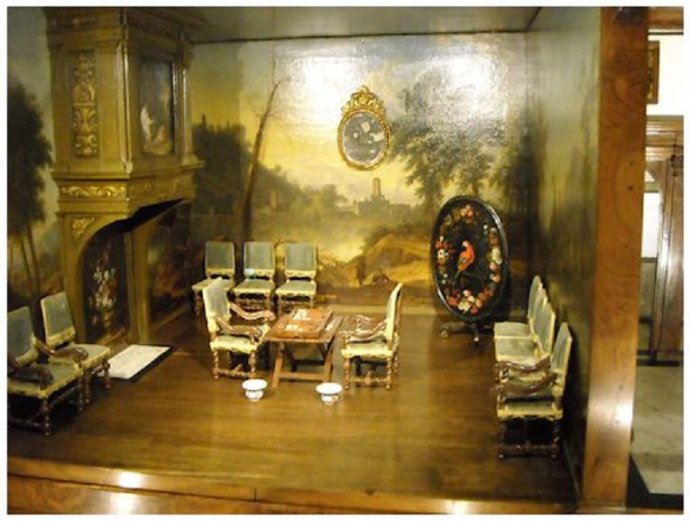
 create websites
create websites